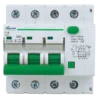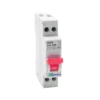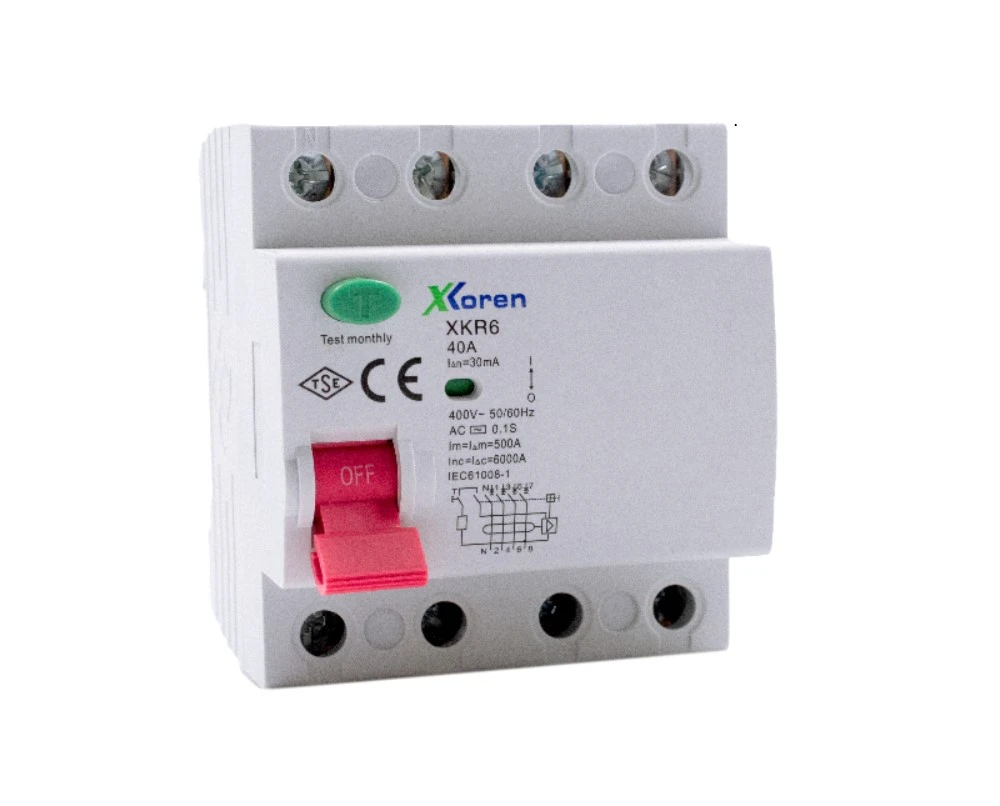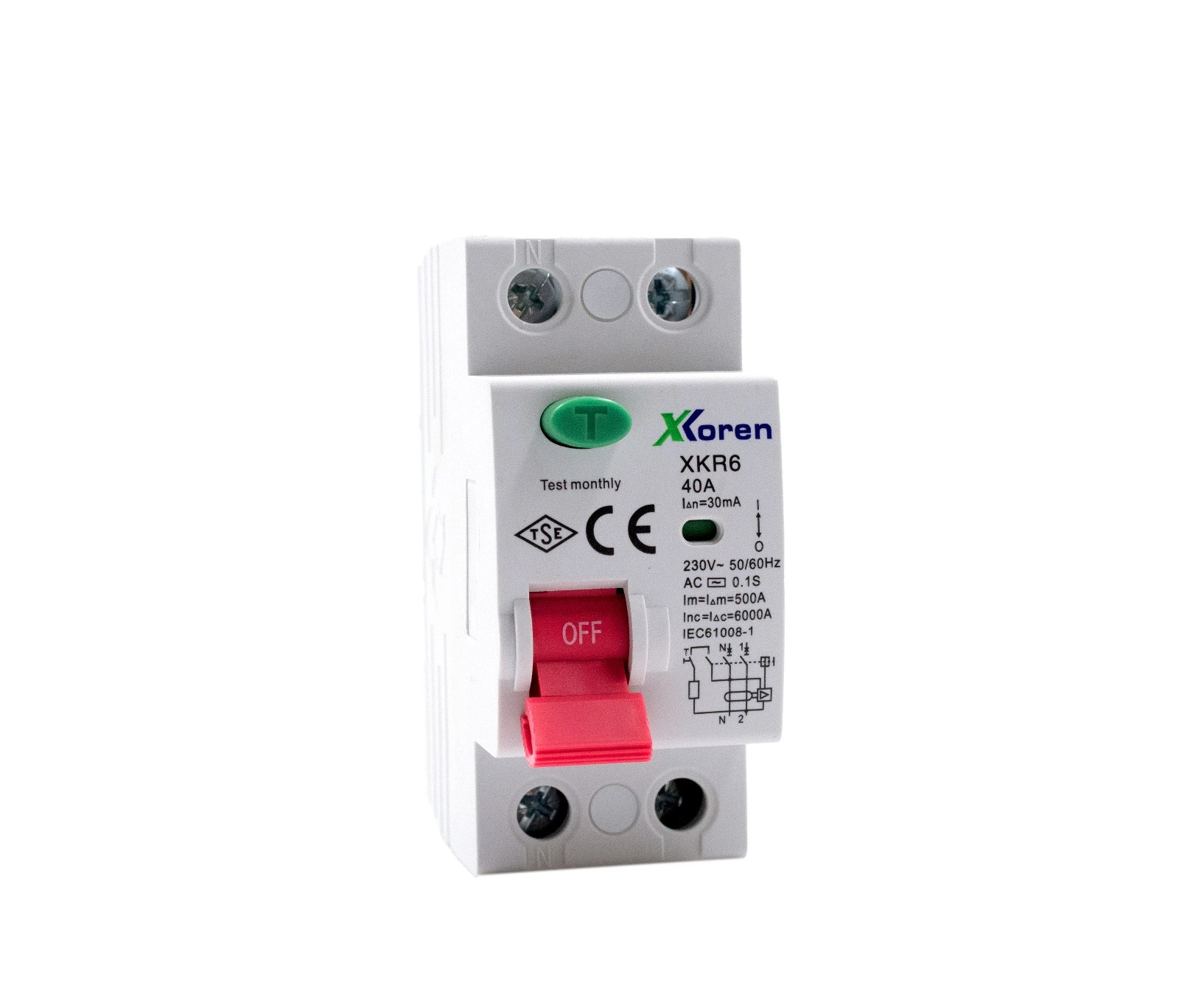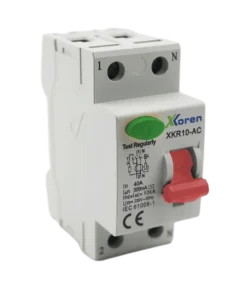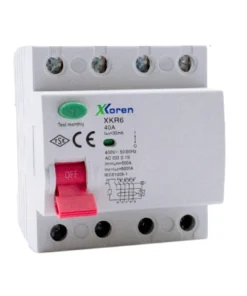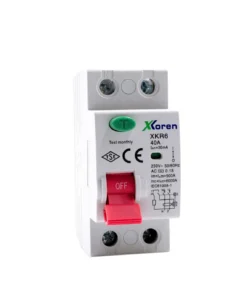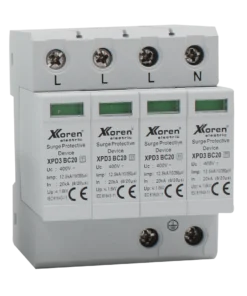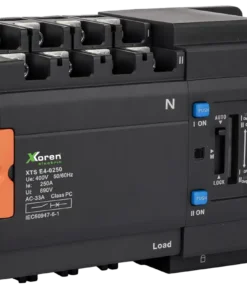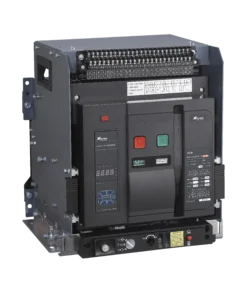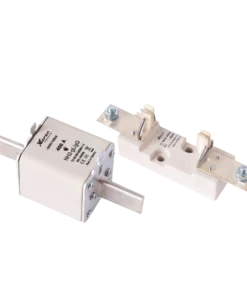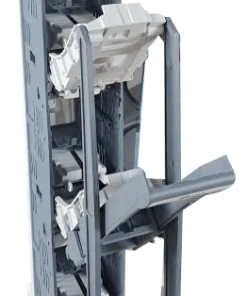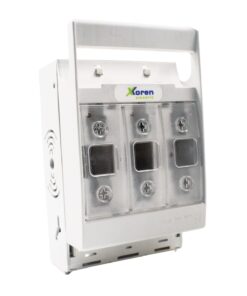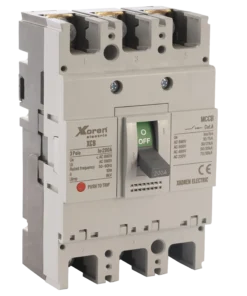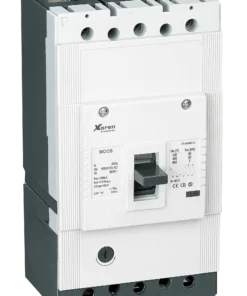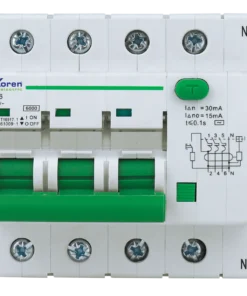Technical Specifications:
Number of Poles: 2P, 4P
Short Circuit Breaking Capacity: 6kA, 10kA
Rated Current: Up to 125A
Protection Threshold: 30mA (life protection), 300mA (fire protection)
Electromechanical trip unit
Flame retardant body with flame retardancy test approval
High electrical and mechanical life
A type, B type, AC type, AC+S type, A+S type, F type and G type
AC Type: It is a residual current protection switch that provides protection in AC currents and allows the direction of AC current to change. It is used in portable electrical systems such as lighting and socket circuits, workshops, irrigation systems, non-critical medical devices, cold storage and caravan-camping systems.
AC+S Type: It is a combination of AC type and delayed type residual current circuit breakers . They are used by providing accurate residual current protection even in very complex electromagnetic environments thanks to the sensitivity of the residual currents that occur in time fluctuating and changing frequencies (separate sensitivity for both AC and pure sinusoidal AC leakages such as 10-30mA). They are used in places where safety and selectivity are critical, such as main distribution panels, oil refineries and natural gas and submarine energy distribution systems, intensive care units, thermal and nuclear power plants, and large logistics centers.
Type A: Provides protection against leakage conditions in AC currents and DC currents up to a certain frequency. It is used in areas such as air conditioning systems, production and assembly lines, medical devices and equipment, laboratories, electric vehicle charging stations, PV inverters, solar energy panels and equipment, ship-aviation equipment, PLC-robotics and sensor systems.
A+S Type: It detects and protects leakage current by activating with a certain delay in AC currents and systems where pulsative direct current components are detected. It is used in areas such as motor drives, energy storage systems, telecommunication towers, base station electrical systems.
Type B: Provides protection against leakage currents in systems with complex waveforms containing harmonic components in both AC and DC currents. It is the most comprehensive type of leakage current protection switch. Therefore, it is used in wide-ranging areas such as PV systems, frequency converters, MRI and other medical devices, UPS and backup energy systems, data processing centers, wind turbines and hydroelectric systems, offshore platforms.
Type F: Provides protection against leakage currents originating from AC currents and rectified single-phase frequency controlled systems. It is used to ensure safe distribution especially in single-phase control systems such as frequency converters and motor drives.
Type G: Detects and protects against high currents caused by the use of AC and industrial machines and high power equipment.
EV Type: The residual current protection switch used in EV (electric vehicle) charging stations
is a safety device designed to ensure the safe charging of electric vehicles. This
switch detects the residual currents that may occur during the charging process and
automatically cuts off the circuit when these currents exceed a certain level. This switch
is an important part of electric vehicle charging stations in terms of both legal requirements and user safety.
Why is a Residual Current Protection Switch Necessary for Safety?
The residual current protection switch is one of the most critical equipment used to ensure safety in electrical circuits. It detects the leakage currents that may occur in electrical installations, interrupts the flow of electricity in the circuit and thus prevents possible electric shocks and fires. The main purpose of these switches is to protect human life and electrical devices. So what is leakage current and why is it so dangerous? Leakage current is the situation where a certain part of the current that should normally flow in the electrical system passes through an uninsulated path. This can lead to electric shocks or a risk of fire. Leakage current protection switches detect such dangers and cut the circuit immediately.
Leakage current protection switches are of great importance especially in homes, offices, commercial buildings and industrial facilities. The risk of leakage current is quite high in places where people are constantly in contact with electricity. For example, as a result of a fault in an electrical device, leakage current can reach the metal body of the device. In this case, the person using the device may be exposed to a serious electric shock. The leakage current protection switch is activated in such cases, cuts off the power of the device and protects the person from being shocked.
Another important risk is that leakage current creates a fire hazard. Old and worn-out electrical installations, especially in old buildings, can cause leakage currents over time. These leakage currents can cause fires by overheating the cables. Leakage current protection switches prevent such situations and greatly reduce the risk of fire. Leakage current protection switches are one of the most important causes of electrical fires in homes and commercial buildings, and therefore leakage current protection switches have become an indispensable part of every electrical installation.
Today, as energy saving and safety requirements increase, the use of leakage current protection switches has become more widespread. According to the electrical safety standards of many countries, the use of leakage current protection switches has been made mandatory in new buildings. Leakage current protection switches are of great importance in preventing accidents caused by electric shocks and minimizing the risk of electrical fires.
Leakage current protection switches protect not only individuals but also electrical devices. Electrical faults occurring in devices can shorten the life of the device and lead to serious financial losses. The cost of such faults can be quite high, especially in expensive industrial machines. Leakage current protection switches protect devices from excessive current, reduce the risk of failure and ensure that devices have a longer life.
As a result, residual current circuit breakers play a vital role in electrical safety. These switches save people’s lives by preventing electric shocks, prevent financial losses by preventing electrical fires, and ensure the safe use of devices. One of the most important steps for electrical safety is to ensure the use of residual current circuit breakers in all types of electrical installations. Especially in older buildings, electrical installations should be checked periodically and it should be ensured that residual current circuit breakers are working properly.
What is a Residual Current Protection Switch?
A residual current protection switch is a safety device that interrupts the flow of electricity when a leakage current occurs in an electrical circuit. If a portion of the current that should normally flow in an electrical circuit leaks into the ground through an uninsulated path, this is called a leakage current. Leakage currents can cause malfunctions in electrical devices, as well as shock people and cause serious health problems or death. Leakage current protection switches instantly detect such leakage currents and prevent danger by cutting the circuit.
The operation of leakage current protection switches is quite simple. When a leakage current occurs in an electrical circuit, the switch detects this current and instantly cuts the circuit. This process takes place in just milliseconds. This fast response time is vital in preventing electric shocks and fire risks. A large portion of the accidents that may occur in electrical systems occur due to late detection of leakage currents. This risk is minimized thanks to the leakage current protection switch.
There are several different types of leakage current protection switches. The most commonly used type in homes and commercial buildings is the 30mA sensitive switches. These types of switches detect even low levels of leakage current that a person may be exposed to and cut the circuit. Switches with higher sensitivity can be used in industrial facilities. In addition, there are also leakage current protection switches with 300mA and 500mA sensitivity, which are used not only for human safety but also for the protection of devices. These switches are especially preferred to minimize the risk of fire.
One of the most important advantages of leakage current protection switches is that they can detect faulty grounding in the system. Grounding is of critical importance for the safety of electrical systems. If grounding is faulty or not done properly, the risk of leakage current increases. Leakage current protection switches are activated in the event of faulty grounding and prevent possible accidents.
Today, the use of leakage current protection switches has been made mandatory for many buildings and structures. This requirement is especially common in the construction sector and commercial buildings. Leakage current protection switches are considered one of the most important electrical protection measures for the safety of people living and working in buildings. At the same time, it is also of great importance in preventing work accidents caused by electric shocks.
Residual current protection switches must be tested regularly. The system must be checked periodically to see if it is working properly using the test button on these switches. If the circuit is not interrupted during the test of the switch, this means that the switch may be faulty and must be replaced immediately. Regular maintenance and testing ensure the effectiveness of residual current protection switches.
As a result, residual current protection switches are of vital importance for ensuring safety in electrical systems. When stray currents occur in electrical circuits, they cut the circuit, protecting people from electric shock and preventing the risk of fire. The presence of such switches in electrical installations is of great importance in terms of life and work safety. The use of residual current protection switches in modern electrical installations is seen as a life-saving and cost-cutting measure.
,
Areas of Use of Residual Current Protection Switches
Residual current circuit breakers (RCDs) play a critical role in ensuring safety in electrical installations. These switches are used in many different areas, from homes to commercial buildings and industrial facilities. Home use is generally against the risk of leakage current in socket circuits. For example, in bathrooms and kitchens, the risk of leakage current is higher in devices that come into contact with water, and leakage current switches are activated to ensure the safety of these devices.
In commercial buildings, preventing possible leakage currents in large electrical systems is of critical importance. Residual current switches have become mandatory for the safe operation of electrical equipment used in these buildings and for the protection of employees. At the same time, the risk of leakage current is higher in industrial facilities where high-power machines operate. For this reason, the use of leakage current protection switches is common in factories and large facilities. While leakage current switches ensure the operation of large devices, they also ensure employee safety.
The wide range of uses of leakage current switches once again reveals how important these devices are in terms of energy safety and efficiency. They guarantee system safety by preventing leakage current without causing power outages.
Working Principle of Residual Current Protection Switches
The working principle of residual current circuit breakers (RCD) is based on detecting the leakage currents occurring in the electrical circuit and instantly cutting the circuit. The imbalance between the phase-neutral current, which is normally zero in the electrical circuit, indicates the presence of leakage current. If this imbalance exceeds a certain level, the switch automatically cuts the circuit.
This process takes place in just milliseconds. In this way, leakage current is prevented from posing a serious safety risk. Leakage current protection switches are designed to protect people from electric shock, especially in models with a sensitivity of 30mA or less. Higher sensitivity models are preferred to prevent the risk of fire. Leakage current may occur due to faulty grounding and insulation problems in electrical installations, which allows the switch to cut the circuit.
This simple but effective mechanism offers great advantages in terms of electrical safety. Switches constantly monitor the electrical current and intervene quickly in the event of leakage currents that may harm people.
Advantages and Disadvantages of Residual Current Protection Switches
The use of residual current protection switches is an important step in electrical safety. The advantages of these switches are quite numerous. First, it protects human life and prevents electric shocks by eliminating the risk of leakage current. Second, it minimizes the risk of fire by detecting leakage currents that can cause electrical fires. Third, it extends the life of electrical equipment by protecting devices from excessive current and wear.
However, residual current protection switches also have some disadvantages. For example, these switches should be tested and maintained regularly. Otherwise, they may operate incorrectly or fail to detect leakage currents. In addition, sometimes, when the sensitivity level is high, they may unnecessarily cut the circuit due to sudden energy surges. This can cause unplanned stops, especially in industrial facilities.
As a result, residual current protection switches are very important with the safety advantages they provide. However, regular maintenance and use in appropriate places are required for the system to work properly. These switches, which play a vital role in electrical safety, both ensure life safety and protect equipment.


